The type of flour you use can have a significant impact on the flavor and texture of the crust when preparing homemade pizza. Bread flour and all-purpose flour are two types of flour frequently used to make pizza dough.
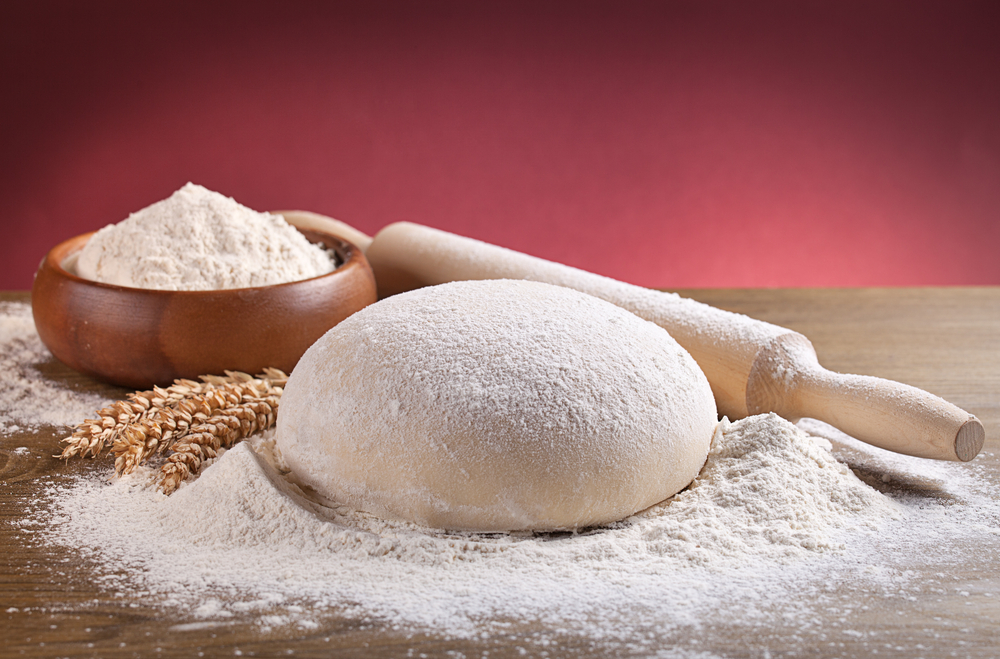
Despite the fact that both can be used to make wonderful pizza, there are some significant distinctions between the two that may have an impact on the outcome.
Bread and other baked items that demand a lot of structure are frequently made with bread flour, a high-protein flour.
Because it contains more gluten than all-purpose flour, it has a chewier texture and can rise higher than all-purpose flour.
On the other hand, all-purpose flour is more adaptable and may be used for a number of baking chores because it has a moderate level of protein and gluten.
Using bread flour for making pizza crust can result in a thicker, chewier crust, but using all-purpose flour can result in a thinner, crispier crust.
You can experiment with different types of flour to obtain the ideal crust for your homemade pizza depending on the recipe and your own preferences.
Pizza dough can be made with a variety of flour, including 00 flour, whole wheat flour, and gluten-free flour, in addition to bread flour and all-purpose flour.
The amount of water and yeast in the dough, the baking time and temperature, and the toppings you select are other elements that can alter the texture and flavor of your pizza crust.
You can produce a homemade pizza that is competitive with your preferred pizzeria with a little skill and trial.
What is Bread Flour?
Bread flour is a type of flour that is made from hard wheat. It has a higher protein content than all-purpose flour, which makes it ideal for baking bread and other baked goods that require structure and texture.
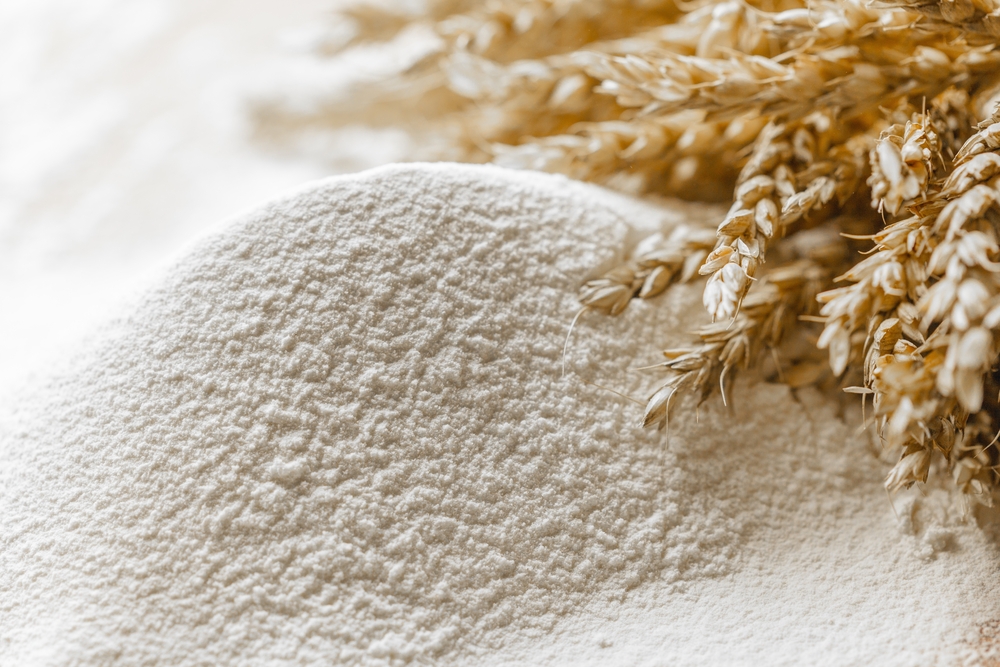
The protein content in bread flour ranges from 12% to 15%, which is higher than the protein content in all-purpose flour.
The higher protein content in bread flour gives it a higher gluten content. Gluten is a protein that gives bread dough its elasticity and chewiness.
When bread dough is kneaded, the gluten strands form and create a structure that traps gas bubbles during the fermentation process. This results in a bread that has a chewy texture and a good rise.
Bread flour is also known for its ability to absorb more water than all-purpose flour. This is because the higher protein content in bread flour allows it to absorb more liquid, which is necessary for creating a dough that has the right consistency and texture.
In addition to its structural benefits, bread flour also has a distinct flavor that is slightly nutty and wheaty. This flavor is more pronounced than the flavor of all-purpose flour, which has a more neutral taste.
Bread flour is an excellent choice for baking bread and other baked goods that require a chewy texture and structure.
Its higher protein and gluten content make it ideal for creating a dough that can rise properly and hold its shape during the baking process.
What is All-Purpose Flour?
All-purpose flour is a versatile type of flour that can be used for various baking purposes. It is made by grinding wheat kernels and removing the bran and germ, leaving only the endosperm.
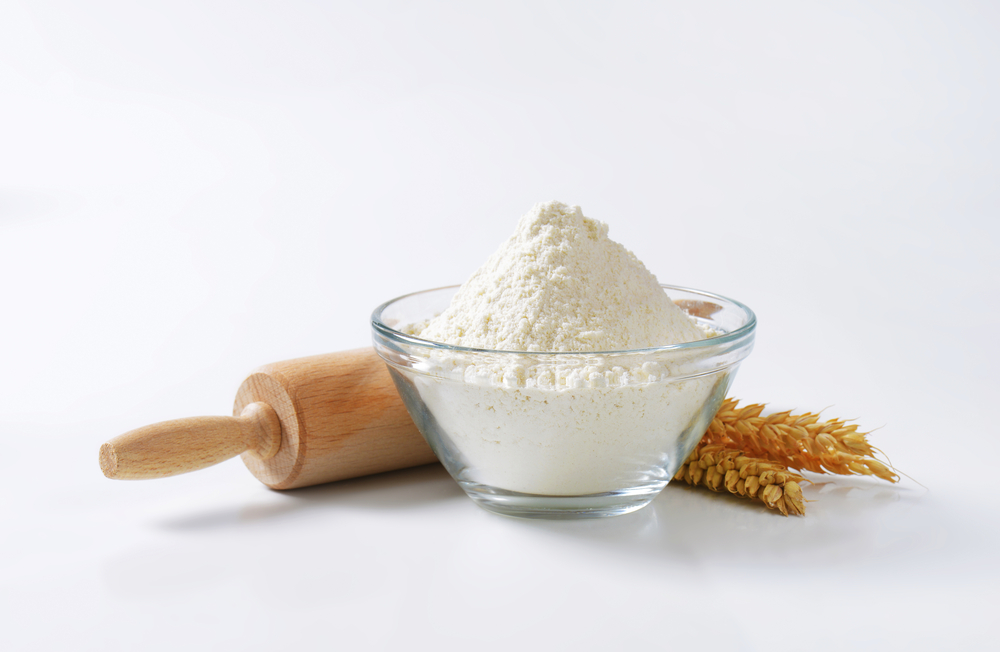
This type of flour is commonly used in households and restaurants for making cakes, cookies, bread, and pizza dough.
One of the main characteristics of all-purpose flour is its protein content. It typically contains around 9-11% protein, which is lower than bread flour but higher than cake flour.
The protein content of flour is important because it affects the structure and texture of baked goods.
All-purpose flour is ideal for recipes that require a moderate amount of gluten development, such as cakes and cookies.
When it comes to pizza dough, all-purpose flour can be a good substitute for bread flour. While bread flour has a higher protein content and produces a chewier crust, all-purpose flour can still produce a delicious pizza crust with a slightly softer texture.
If you want a crust with more structure and chew, you can also add vital wheat gluten to all-purpose flour to increase its protein content.
Another advantage of all-purpose flour is its neutral flavor. Unlike whole wheat flour, which has a nutty and slightly bitter taste, all-purpose flour has a mild flavor that won’t overpower other ingredients in your recipe.
This makes it a great choice for making pizza dough, which often includes flavorful toppings like tomato sauce, cheese, and herbs.
All-purpose flour is a pantry staple that can be used for a wide range of baking purposes.
While it may not be the best choice for every recipe, it is a versatile ingredient that can produce delicious results with the right techniques and ingredients.
Pizza Dough: Bread Flour vs All-Purpose Flour
When it comes to making pizza dough, the type of flour you use can make a big difference in the final product.
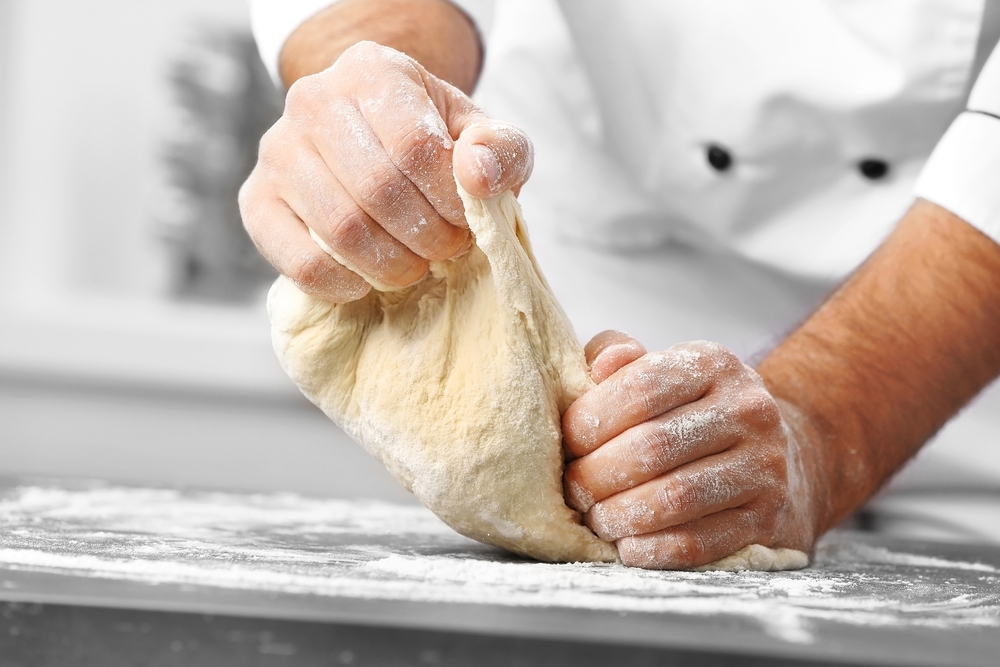
Bread flour and all-purpose flour are two common types of flour used in making pizza dough, and each has its own unique characteristics.
One of the main differences between bread flour and all-purpose flour is its protein content. Bread flour has a higher protein content, typically around 11-13%, while all-purpose flour has a lower protein content, usually around 8-11%.
This higher protein content in bread flour means that it has a higher gluten content, which gives it more structure and makes it ideal for making chewy pizza crusts that can hold up to toppings.
On the other hand, all-purpose flour has a lower protein content, which means it has less gluten. This can result in a softer, more tender crust that may not be as chewy as one made with bread flour.
However, all-purpose flour can still be used to make pizza dough, and it may be a good option if you prefer a thinner, crispier crust.
Another factor to consider when making pizza dough is the amount of water you use. Bread flour can absorb more water than all-purpose flour, which means you may need to add more water to your dough if you’re using all-purpose flour.
This can affect the texture and rise of your dough, so it’s important to pay attention to the consistency of your dough as you’re making it.
Finally, yeast is an important ingredient in pizza dough, and it can also be affected by the type of flour you use. Bread flour can help yeast to rise more effectively, which can result in a lighter, fluffier crust.
All-purpose flour can still be used to make pizza dough, but you may need to adjust the amount of yeast you use to get the same rise.
Both bread flour and all-purpose flour can be used to make pizza dough, and the choice between the two will depend on your personal preference for crust texture and flavor.
If you prefer a chewy crust with more structure, bread flour may be the better option. If you prefer a softer, more tender crust, all-purpose flour may be the way to go.
Pizza Crust: Bread Flour vs All-Purpose Flour
When it comes to making pizza dough, the type of flour you choose can make a big difference in the texture and taste of your crust. We’ll explore the differences between bread flour and all-purpose flour, and how they affect your pizza crust.
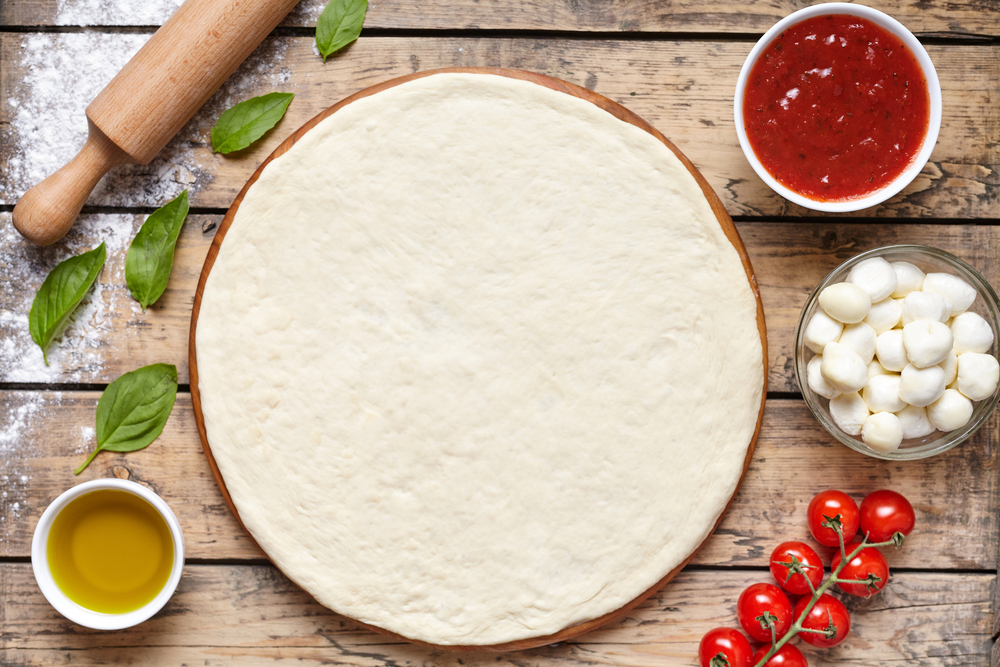
Bread Flour
Bread flour is a high-protein flour that is ideal for making bread and pizza dough. With a protein content of around 12-14%, bread flour creates a stronger gluten network, which gives the dough its elasticity and chewiness.
This makes it perfect for creating a thicker, bread-like crust that can hold up to heavier toppings.
If you’re looking to experiment with different types of flour, you can also try using pastry flour, spelt, almond flour, whole wheat flour, or even gluten-free flour.
However, keep in mind that these flours will produce a different texture and taste than bread flour or all-purpose flour.
All-Purpose Flour
All-purpose flour is a versatile flour that can be used for a variety of baking tasks, including making pizza dough.
It has a moderate amount of gluten and protein, making it a good substitute for bread flour if you don’t have any on hand. However, it will produce a thinner, crisper crust than bread flour.
If you’re looking to create a thin-crust pizza, all-purpose flour might be the way to go. It’s also a good option if you’re looking to make a deep-dish pizza crust, as it won’t rise as much as bread flour.
Baking Tips
When making pizza dough, it’s important to use warm water and add salt to the flour mixture. This will help activate the yeast and create a better rise.
You can also experiment with adding butter or sugar to the dough to create a richer flavor.
For the best results, use high-quality mozzarella cheese and a flavorful pizza sauce. King Arthur Flour is a popular brand of flour that is often recommended for making pizza dough.
When baking your pizza, keep in mind that the baking time will vary depending on the thickness of your crust and the toppings you’re using.
For a crispy crust, preheat your oven to a high temperature (around 475-500°F) and bake the pizza for 10-12 minutes. For a softer, bread-like crust, bake at a lower temperature (around 425°F) for 15-20 minutes.
Both bread flour and all-purpose flour can be used to make delicious pizza crusts, but they will produce different textures and tastes. Experiment with different flours and baking methods to find your perfect pizza dough recipe.
Conclusion
Based on our research, we can confidently say that both bread flour and all-purpose flour can be used to make a delicious pizza. However, the choice of flour depends on the type of crust you want to achieve.
If you want a crust that is chewy, stretchy and has a bread-like texture, then bread flour is the way to go.
With its high protein content and gluten, bread flour creates a structured dough that can rise and hold its shape during baking.
On the other hand, if you prefer a thinner and crisper crust, then all-purpose flour is a better option.
All-purpose flour has a moderate amount of gluten and protein, which makes it versatile and suitable for a variety of baking tasks.
It’s important to note that the type of flour is not the only factor that affects the texture and flavor of your pizza.
Other factors such as the hydration level of the dough, the type of yeast used, and the baking temperature also play a significant role.
In summary, the choice of flour for your pizza depends on your personal preference and the type of crust you want to achieve.
Both bread flour and all-purpose flour have their unique benefits and drawbacks, and it’s up to you to decide which one works best for you.







Add comment